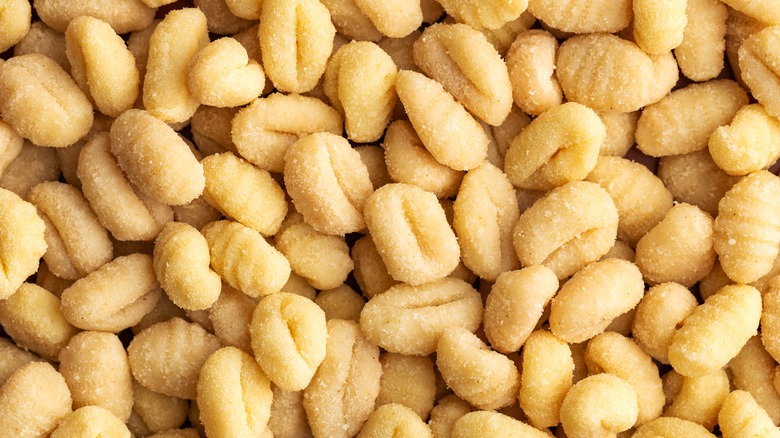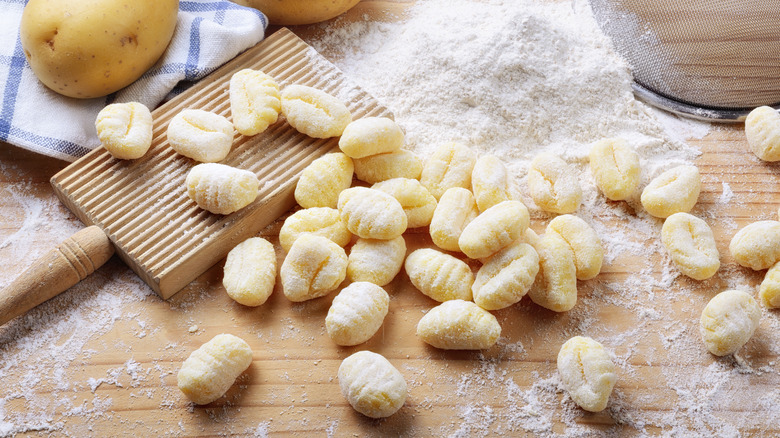Why Your Homemade Gnocchi Turned Out Tough
Making pasta at home can seem challenging. Homemade pasta requires that you dispose of tons of egg whites, buy a particular type of flour, and own a pasta machine. If you don't want to go through this much trouble but still desire homemade pasta, gnocchi is your best option. These fluffy potato-based nuggets are easy to assemble, require little to no arm workout, and can be made as messily as your heart desires.
Gnocchi is refined yet easier to make than any other pasta. In fact, you don't even need to add eggs to your gnocchi. Potatoes and flour will suffice. But the simplicity of any gnocchi recipe means that you ought to be very precise with how you make it. Add boiled potatoes straight to the dough, and your gnocchi might turn out soggy. Jazz it up with vegetable puree, and you might mess up the dough ratio, per The Washington Post. There are many things that can go wrong with your homemade gnocchi, and the most common mistake will result in tough gnocchi.
Too much flour
Gnocchi is different from other pasta because its primary ingredient is potato. This means that it has a significantly lower gluten content than wheat-based pasta (via The Gluten Free Brothers). Memorie di Angelina states that it is important to watch your ratio of flour to potatoes. The site calls for a quarter of the amount of flour to potatoes. Any more flour would overpower the soft starches of the potato and make your gnocchi dense.
You can also knead it too vigorously and end up with dense, chewy pieces. Although gnocchi is mainly made out of potatoes, which are gluten-free, the presence of flour gives it the ability to develop gluten. Harvard T.H. Chan School of Public Health states that gluten, a protein found in wheat flour, gives gnocchi its bite and acts as a binder for many flour-based foods. Without flour, gnocchi would easily disintegrate like mashed potatoes. A gnocchi dough is extremely temperamental, meaning it can easily be ruined with an excess of flour or kneading. To avoid this error, try adding smaller amounts of flour at a time. This technique can help you gauge how much flour you need to add and will give you more control over how your dough turns out. To get the perfect balance of chewy and delicate, you should avoid these common mistakes.

